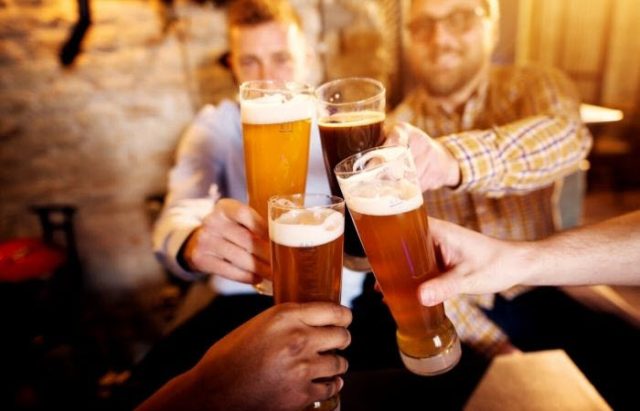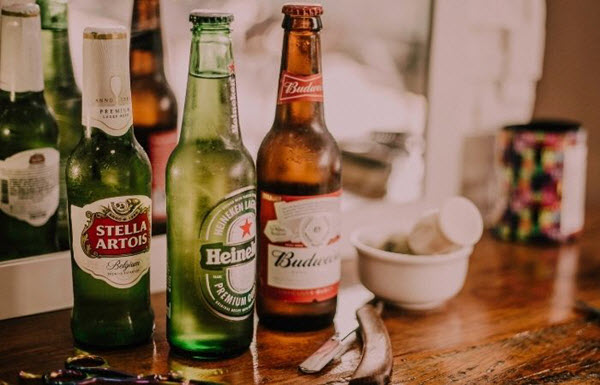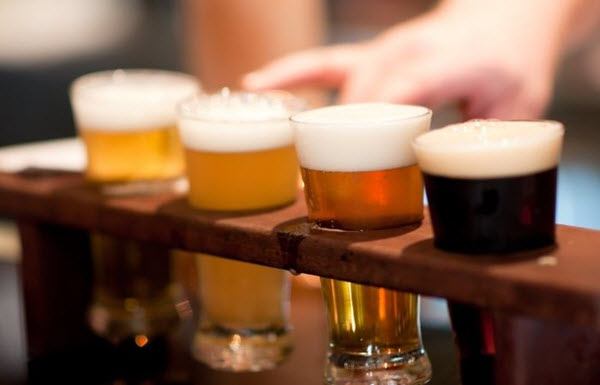A Starter Guide To Developing Your Taste For Beer
By Jonathan Kelly
January 10, 2024 • Fact checked by Dumb Little Man

They say beer is an acquired taste, and that’s true for many new beer drinkers. First-timers usually describe it as tasting gross and even mossy. However, those who’ve sampled beer for years praise the flavor notes and how the color impacts the delicious experience.
How is it possible to bridge that divide? Can you learn to appreciate beer without just having to brace yourself and endure the gross taste until it’s better?
Absolutely. With the right approach, you can develop a taste for beer, learn to appreciate those flavor notes, and actually enjoy the drinking experience without needing to “put in the time.” As a bonus, once you’ve followed these 4 steps, you can impress your friends with your beer knowledge while you enjoy a cold one.
1. Understand The Different Classes Of Beer

The greatest hurdle for new beer drinkers is understanding that beer isn’t just beer. It can actually be more diversified than wine and whiskeys, and the kind you choose will dramatically impact your flavor experience.
To quickly find your niche and enjoy beer drinking, it helps to understand these different types of beer. That’ll help you narrow down which to try first, which to avoid until your palate is more developed, and determine what beer tastes great because it’s the right class for your unique taste.
To get you started, let’s evaluate the 2 main classes: ales or lagers. All beers start out as one or the other, and then get highly diverse after that.
Ales
An ale uses “top fermentation,” where the yeast ferments at a warmer temperature and settles at the top of the beer. These are all the different types of ale:
- IPA
- Imperial
- Pale Ale
- Stout
- Sours
- Wheat Ale
Ales typically do not age at all, although some will age for a few weeks before they’re on shelves. They’re some of the oldest beers, dating back more than 4,000 years, so people have had plenty of time to perfect them.
Lagers
Contrary to ale, a lager uses “bottom fermentation,” where the yeast ferments at a cooler temperature and therefore, settles at the bottom of the beer. Here are the different types of lagers:
- Pilsner
- Helles
- Mexican Lager
- Vienna Lager
- Kölsch
Because quality lagers typically require more space and time than ales, it’s less common to see craft breweries producing lagers. They’re typically produced by large name brands, and have very specific flavors. With that said, you can occasionally find lagers from a local craft brewer that has a passion for the particular flavor.
2. Know The “Three Parts” Of A Beer To Appreciate
Of course, it’s possible to just sip a beer and take it at face value. Is it good or bad? Yay or nay?
If you’re developing your palate, though, it helps to narrow down exactly what parts of the beer are unique or pleasing.
For a beer that fits your tastes, this can help you enjoy the drinking experience even more. For a beer that doesn’t quite hit the mark, this evaluation helps you decide what it did right and what it did… not so much. Then you can decide what to look for in your next tasting experience. Here are the 3 main aspects to appreciate:
Smell
Before you even taste the beer, take a gentle whiff. Think about what you’re smelling. Does it smell sweet? Does it smell yeasty? Does it smell like a specific fruit or herb?
If you’re drinking a cold beer, it’s worth sampling part of it cold and then waiting until it’s warmed slightly in your hand before smelling or tasting it again. Some beers hit their peak in those subtle few moments.
Taste
Now it’s time to taste. Enjoy a sip and think about the different flavors you’re getting from this beer. You don’t have to get ultra-specific, and don’t feel compelled to hunt for a comparison if one doesn’t present itself naturally. Just think about what types of foods the beer reminds you of.
Does it taste a bit like cereal? Can you taste tropical fruit? Are there spices you’re picking up?
Texture
This is often described as “mouthfeel.” Does the beer taste thick or thin? Do you find that it’s crisp, or that it lingers? Does the beer have a harsh feeling, or does it taste sweet and gentle?
If you can’t quite tell the difference, then don’t worry. You’re just trying to identify the way the beer makes you feel specifically. This is what you’ll be trying to recreate or avoid in your future beer tastings.
3. Taste Beers “Blind” First

It’s natural to look for a second opinion when you’re new to beer tasting. Many people ask their friends, the bartender, or look for online reviews before trying a new beer. However, this can actually harm your tasting experience.
You’ll be looking for the notes or aromas that other people found pleasant, rather than letting your own taste buds decide. A palate is vulnerable to suggestion, and that can make it harder for you to narrow down what your taste buds are actually saying.
Developing your palate is all about identifying the subtleties. These subtleties will eventually become more prominent the more you drink. Then, ta-da, you’ll be a beer drinker.
When you’re first trying a beer, go in blind and decide how it tastes to you. Consider these elements of your beers:
- Flavor Notes
- Strength
- Aromas
- Alcohol Level
- Mix of Flavors
Once you’ve tasted a beer and formed an opinion, you can then ask for second opinions. See if your experience matched others’ and if they noticed anything you didn’t. This is a great way to hone your tasting palate.
4. Develop Your Palate With Variety
This is the fun part for a lot of people. Trying a little bit of everything will help your tongue better identify the differences, the subtleties, and the pleasant notes.
You may even find your taste changing from your original favorites to brand new ones as you explore the different types of beer, the different brews, and even little differences between the same types of beer. That’s especially true with craft brewers, who always add their own unique twist to each bottle.
If you settle on a favorite, then feel free to enjoy it to the max. If you really want a strong palate, though, try to never get the same beer twice, at least until you have an assortment of flavors under your belt.
The good news is, you don’t need to become a beer fanatic and only hunt out rare craft breweries to accomplish this. Many bars have a variety of different beers on tap at any given moment. Visit a few restaurants in your area and taste 2-3 beers wherever you go.
You can even create a “beer diary,” where you can write down your impressions of beers and which ones you like or dislike. You’ll quickly start to decide what beers you enjoy and which ones you’d rather stay away from.
Conclusion
Developing a taste for beer can seem intimidating, or like an endless quest. That’s especially true because many people don’t know what beer is “supposed” to taste like.
However, there’s so much variety in beer – and that’s an asset. Whether you want to become your friend group’s designated “beer snob” or you just know what to pick at your next concert, keeping these tips in mind will help you develop your own unique taste.
Jonathan Kelly
Jon Kelly is a digital native with an extensive background spanning two decades of experience working on the Web in content creation and marketing, working and collaborating with over 500 businesses across diverse industries.







